This time, we’re introducing RuriDragon—a manga perfect for learning casual, everyday Japanese through the daily life of a dragon girl.
Work Information
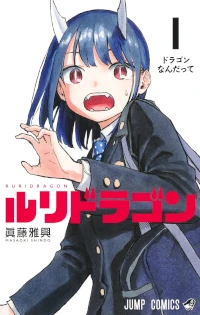
RuriDragon (ルリドラゴン)
Author: Shindo Masaoki
Publisher: Shueisha
Amount of text: moderate
Challenge level: ★
Latest volume : Vol.3(Mar.2025 / Ongoing)
Story overview
One morning, high school student Ruri Aoki wakes up to find that she has suddenly grown horns on her head! Her mother tells her that it might be because her father is a dragon, leaving Ruri confused. Nevertheless, she heads to school. Her classmates are fascinated by her unusual horns, and soon another dragon trait becomes apparent! A slight change in her everyday life—Ruri’s easygoing days as a dragon girl are just beginning.
The Appeal of This Manga
The series began serialization in Weekly Shonen Jump in June 2022. With its stylish, contemporary art style and a unique world where fantasy and everyday life blend seamlessly, the story quickly gained significant attention from the outset. However, after just six chapters, it was put on hiatus due to the author’s health issues. Following nearly two years of silence, the series resumed serialization—this time on Shonen Jump+—an unusual path that has contributed to its cult following.
Despite being a newcomer to Weekly Shonen Jump, the author’s clean, polished artwork and the bizarre premise of a dragon as the protagonist were surprisingly easy for both the protagonist and those around him to accept. This relaxed approach to depicting everyday life is one of the key reasons behind the series’ popularity. Additionally, the nuanced portrayal of the relationships and emotional distance between the protagonist, Ruri, and his classmates possesses a unique sense of realism. As a result, the series strongly resonates with teenagers currently experiencing adolescence, while also evoking a sense of nostalgia in adults who once lived through those years—garnering support across a broad range of age groups.
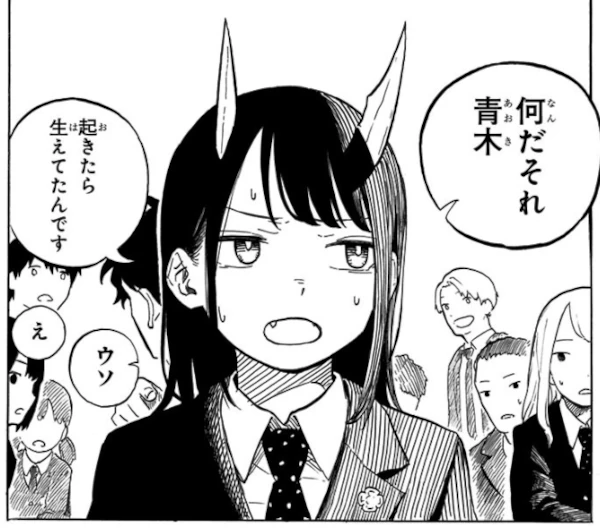
Why this manga is suitable for learning Japanese
This manga is not only entertaining but also highly recommended for Japanese learners for several reasons.
The focus is on everyday conversations and it is easy to read
The main content consists of everyday conversations with friends and her mother, with hardly any difficult expressions or kanji that might be hard for beginners to read. Even beginners learning Japanese should not have much trouble reading through it.

Learn modern high school conversation expressions
The heroine, Ruri, is a high school student. The work naturally depicts the everyday interactions of contemporary Japanese high school students, allowing readers to encounter many examples of such conversational expressions.
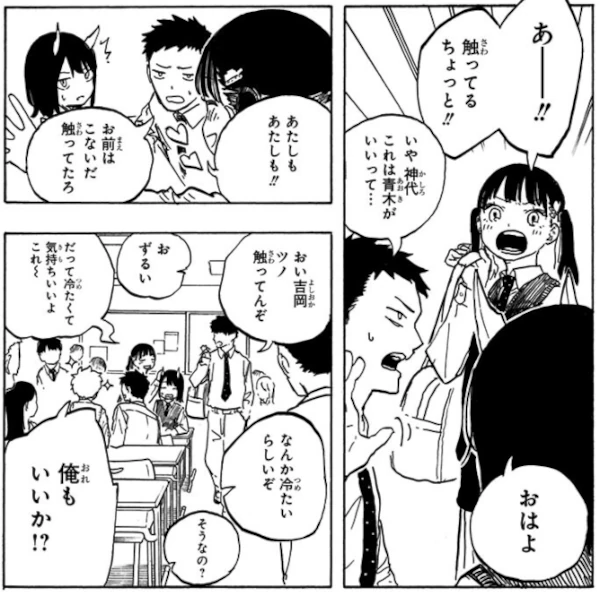
Phrase Spotlight
From Danger to Awesome?! The Wild Life of “ヤバい” in Japaneseヤバい/ヤバくない?
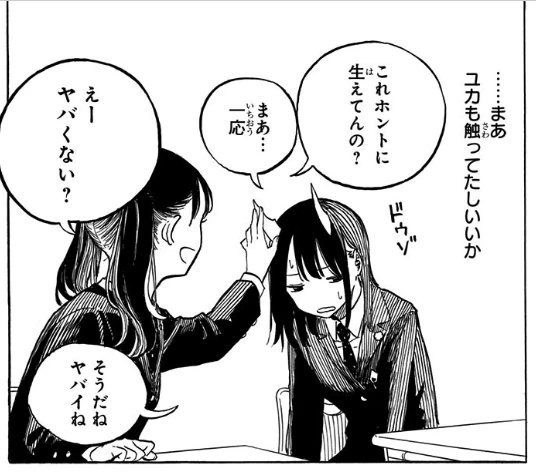
If you’re learning Japanese, you’ve probably heard the word “ヤバい” (yabai) or the phrase “ヤバくない?” pop up in all kinds of situations—from anime and J-dramas to casual conversations among friends. But what exactly does it mean, and why does it seem to mean both “awesome” and “terrible”? Let’s break it down.
Origins of “ヤバい”
Originally, ヤバい was slang from the underworld and delinquent communities in the 1970s and 1980s. It was used to describe dangerous or risky situations—something close to “sketchy,” “shady,” or “this is bad” in English.
Example:
警察来た!ヤバい!
The cops are here! This is bad!
Grammar and Form
ヤバい is an い-adjective. Like other い-adjectives, it can be conjugated:
| Form | Example | Meaning |
|---|---|---|
| Present | ヤバい | It’s bad/amazing |
| Negative | ヤバくない | It’s not bad/amazing |
| Past | ヤバかった | It was bad/amazing |
| Te-form | ヤバくて | Because it was bad/amazing |
ヤバくない? is often used as a rhetorical question, similar to “Isn’t that crazy?” or “Isn’t that awesome?” in English.
Shifting Meanings: From Negative to Positive
Over time, especially starting in the 1990s and 2000s, young people began to use ヤバい in positive contexts too—often to express excitement, amazement, or even admiration.
Examples:
あのライブ、ヤバかったね!
That concert was amazing, right?
このケーキ、ヤバくない?
Isn’t this cake amazing?
So depending on the tone and situation, ヤバい can mean:
・Bad / dangerous / serious
・Amazing / impressive / cool
・Overwhelming / emotional / unbelievable
It’s extremely context-dependent, which is why it’s considered such a nuanced word.
From Youth Slang to Mainstream Japanese
Once considered strictly youth slang, ヤバい is now used across generations, from teenagers to adults—even in some informal business settings or on television. It’s still casual, but widely accepted in modern spoken Japanese.
Even non-native speakers who live in Japan often find themselves naturally using ヤバい in casual speech, because it’s such a quick, expressive way to respond to surprising or strong experiences.
Why It’s Useful for Learners
・It teaches you how context shapes meaning in Japanese.
・It’s a great example of natural, emotional expression.
・It gives insight into modern, living language beyond textbooks.
Final Thought
ヤバい is a flexible and expressive word that reflects the dynamism of modern Japanese. Whether something is dangerously bad or shockingly good, this one word can say it all—just be sure to read the context and tone!
Next time you’re watching a Japanese show and hear “ヤバっ!”—you’ll know exactly how to interpret it.
A Little Warning
Slower serialization pace compared to other Jump series
RuriDragon moved from the main Weekly Shonen Jump magazine to the digital platform Shonen Jump+ (the English version is MANGA Plus by SHUEISHA), resulting in a slower serialization pace compared to typical Weekly Shonen Jump series. Consequently, the release of the collected volumes is also at a more relaxed pace.
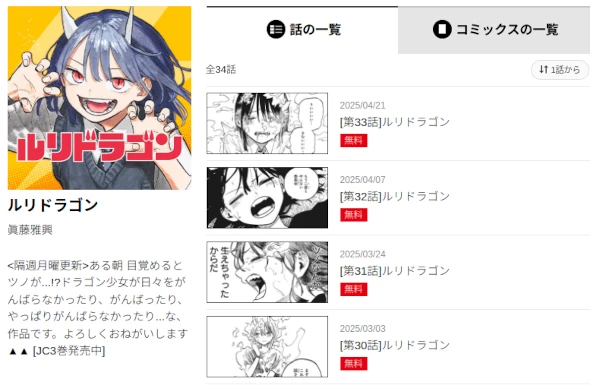
Work Information

RuriDragon (ルリドラゴン)
Author: Shindo Masaoki
Publisher: Shueisha
Amount of text: moderate
Challenge level: ★
Latest volume : Vol.3(Mar.2025 / Ongoing)
Here’s a safe and convenient way to purchase Japanese manga.
This Blog’s ConceptIn this blog, we are introducing manga that are not only highly captivating but also ideal for Japanese language learners. Studying Japanese through manga is both fun and effective. Manga allows you to understand the subtleties of keigo (honorifics), teineigo (polite speech), and casual conversation in Japanese. We hope you find works that match your interests and use them to enhance your Japanese learning journey.